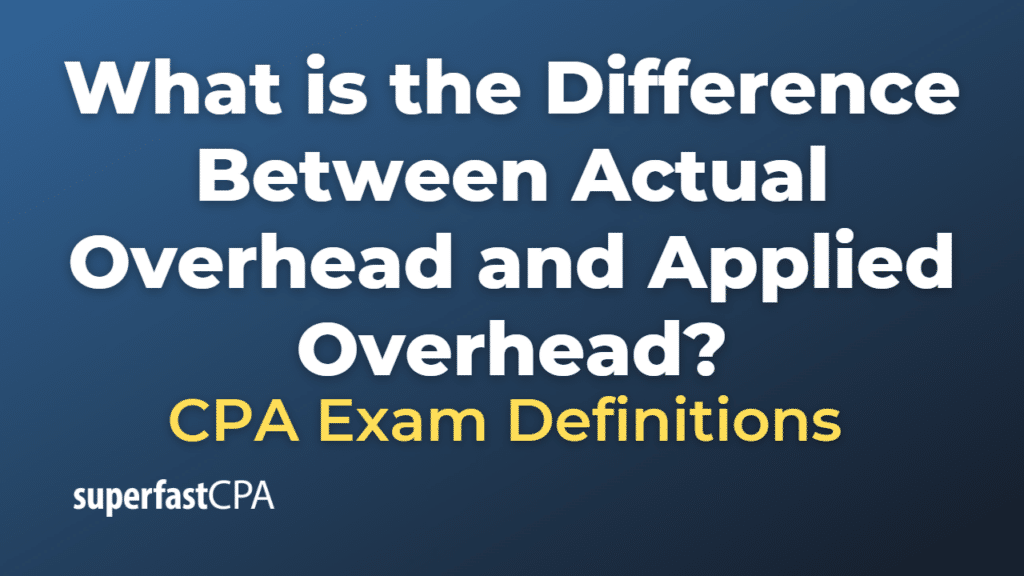Difference Between Actual Overhead and Applied Overhead
In cost accounting, overhead refers to indirect costs that are incurred in the production of goods or services, but cannot be directly traced to a specific product or service. These include costs like rent, utilities, and depreciation.
Actual Overhead:
Actual overhead is the real costs that a business incurs for indirect manufacturing costs. This includes actual expenses incurred for materials and labor, rent, utilities, and other miscellaneous costs associated with running a factory or production facility but not directly linked to a specific product.
Applied Overhead:
Applied overhead, on the other hand, is the estimated amount of overhead costs that should be allocated to the production of goods or services, based on a certain allocation base. The allocation base could be direct labor hours, machine hours, or any other measure that is deemed appropriate for the business. This applied overhead is calculated before the production process and is used to assign overhead costs to products during the production process.
The difference between actual overhead and applied overhead can result in either over-applied or under-applied overhead, which needs to be adjusted at the end of the accounting period to ensure accurate cost accounting.
In summary, actual overhead is the real, incurred overhead cost, while applied overhead is the estimated overhead cost allocated to the production of goods or services.
Example of the Difference Between Actual Overhead and Applied Overhead
Let’s consider a manufacturing business for our example.
Let’s say Stellar Toys, a toy manufacturer, is producing a line of action figures.
Applied Overhead:
At the beginning of the year, Stellar Toys estimates that it will have $200,000 in overhead costs for the year, including items like factory rent, utilities, and indirect labor. The company expects to have 20,000 direct labor hours during the year.
So, Stellar Toys sets its predetermined overhead rate as $10 per direct labor hour ($200,000 overhead / 20,000 labor hours). This is the rate that will be used to apply overhead costs to the toys as they are produced.
If an action figure requires 2 direct labor hours to produce, Stellar Toys will apply $20 of overhead costs to the cost of that action figure (2 hours * $10/hour).
Actual Overhead:
As the year progresses, Stellar Toys incurs actual overhead costs. These may not exactly match the estimates. For instance, utility costs might rise due to an increase in energy prices, or the factory rent might increase.
By the end of the year, Stellar Toys finds that it has actually incurred $210,000 in overhead costs. This is the actual overhead.
Overhead Variance:
At the end of the year, Stellar Toys will need to reconcile its applied overhead with its actual overhead. In this case, there is an overhead variance of $10,000 ($210,000 actual – $200,000 applied), meaning Stellar Toys has under-applied overhead. It will need to adjust its financial records to account for this difference.
So, in this example, you can see how applied overhead and actual overhead can differ and why it’s necessary to adjust for any variance at the end of the accounting period.













